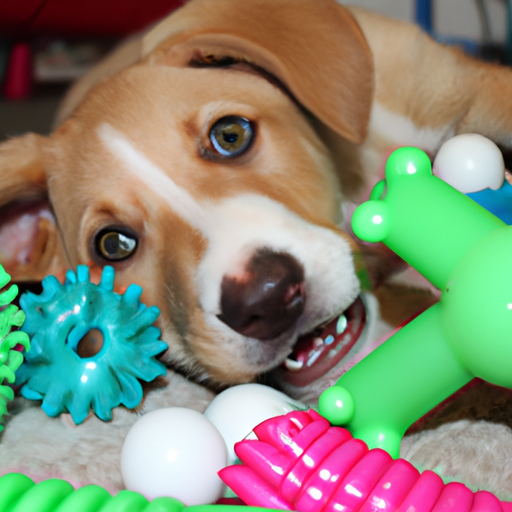Understanding Your Puppy’s Teething Phase
Just like human babies, puppies also undergo a teething phase. This is a crucial time in your puppy’s life when their baby teeth start falling out to make way for their adult ones. It can be a tough time for both you and your puppy, as your little fur-ball may experience discomfort or even pain.
Teething Timelines
Your puppy’s teething phase typically begins when they are around three to four weeks old. Here’s a rough timeline to help you understand what to expect:
- Birth to two weeks: No visible teeth
- Three to four weeks: Baby teeth start to emerge
- Four to six months: Baby teeth start falling out, replaced by adult teeth
- Six to seven months: Most adult teeth are in
Remember, these timelines are approximate and may vary from breed to breed.
Recognizing the Signs of Teething
Your puppy cannot communicate their discomfort in words, so it’s up to you to recognize the signs. Here are some common symptoms of teething:
- Excessive drooling
- Chewing on everything in sight
- Loss of appetite
- Swollen, red gums
- Finding baby teeth around the house
How to Help Your Teething Puppy
Your primary role during your puppy’s teething phase is to provide comfort and relief. Here are some ways you can help:
- Provide chew toys: Chewing can help relieve the discomfort. Make sure the toys are safe, non-toxic, and size-appropriate.
- Offer cold treats: Ice cubes or frozen puppy treats can soothe sore gums.
- Feed soft foods: If your puppy is refusing to eat, switch to softer foods until their discomfort decreases.
Preventing Destructive Chewing
It’s normal for teething puppies to want to chew on everything. But this can quickly turn into a destructive habit if not properly managed. Here are some tips:
- Puppy-proof your house by removing items your puppy might chew.
- Redirect their attention to appropriate chew toys.
- Use positive reinforcement to reward good behavior.
Puppy Dental Care
Proper dental care is crucial even during the teething phase. Here are some tips to keep your puppy’s teeth healthy:
- Start brushing their teeth early to get them used to it.
- Use a puppy-specific toothpaste.
- Schedule regular dental check-ups with your vet.
The End of the Teething Phase
The teething phase usually ends when your puppy is around six to seven months old. But this doesn’t mean your role is over. Continue to monitor their dental health and keep providing chew toys to meet their innate need to chew.
Frequently Asked Questions
1. Is it normal for puppies to bleed when teething?
Yes, it’s normal to see a little blood on your puppy’s toys or chews during the teething phase.
2. Can teething cause diarrhea in puppies?
While some puppies may experience soft stool, severe diarrhea is not typical and you should consult your vet.
3. Should I pull out my puppy’s loose teeth?
No, let nature take its course. If a tooth is not coming out naturally, consult your vet.
4. How long does the teething phase last?
The teething phase lasts until around six to seven months of age.
Remember, every puppy is unique and may go through the teething phase a little differently. Your patience, understanding, and care can make a huge difference in making this phase easier for your little buddy.



